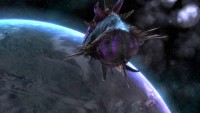Outreach: learning the scientific method through games

Thomas Targett and Duncan Forgan, research fellows at the Institute for Astronomy, have used the Starcraft game to show how statistical models can predict change in highly complicated systems. They explain their methods below.
Our understanding of the Universe has grown at an incredible rate over the past century. Recent technological marvels like the Hubble Space Telescope, and popular science programmes such as “Stargazing Live” have raised public interest and understanding of astronomy to an all-time high.
However, while cutting-edge discoveries in astrophysics often attract widespread press coverage, a gap in public knowledge often remains when it comes to the complex processes behind the scenes. These progress from an initial idea, to data-gathering, through analysis and testing, and finally to discovery – steps commonly known as the scientific method.
As part of a public outreach project to increase understanding of the scientific method, we used the outcomes of online player vs. player matches in the Blizzard Entertainment computer game StarCraft 2 to develop models of interstellar colonisation. While this project certainly does not represent any real development in our understanding of possible extra-terrestrial life, it does link the more familiar world of interstellar video games with applied science methodology.
We hope that translating parameters from StarCraft 2 into a numerical simulation, which is then explored in a setting based on real-world physics, will open up the processes and concepts of academic paper-writing to a broader audience.
Within the StarCraft 2 universe, three alien civilisations compete for a region of space known as the Koprulu Sector, supposedly situated on the galactic fringe of the Milky Way. These civilisations comprise a human penal colony offshoot group known as the “Terran Dominion”, the insect-like hive-minded “Zerg”, and the technologically advanced telepathic “Protoss”. We transplanted these fictitious civilisations into a model region of space whose properties we set using actual observational data from our own Milky Way.
Our model region has a stellar density, star-formation rate, and other characteristics based on the average values found in our own galaxy. Real-world constraints have been placed on their speed of movement (ie they can’t travel faster than light) before the characters are released into the numerical model. Their subsequent encounters and conflicts are then resolved based upon the “data” collected from outcomes achieved in the online gaming community. It is hoped that this application of combined real and fictional data will illustrate the core properties involved in producing research papers and provide broader understanding of how data are collected and analysed in scientific research.
This is not a peer reviewed scientific research paper, nor has it been submitted to a scientific journal. All work was conducted outside of office hours on personal time.
Further information
Article in Wired: Study Predicts Which StarCraft Race Will Conquer Space

